Where Community, Sustainability, and Innovation Meet

Farmlyplace: Your Partner in Building Green, Resilient, and Harmonious Urban Ecosystems
Controversially, traditional urban development often neglects environmental sustainability and community well-being. In an era dominated by concrete jungles, the pressing need to reimagine our urban spaces is more urgent than ever.
Since 2017, Farmlyplace has been actively involved in place-making, utilizing its expertise in vertical farming to reshape urban environments and construct sustainable, green communities for the future.
At the core of Farmlyplace's mission lies a strong commitment to environmental sustainability. The organization employs cutting-edge vertical farming technologies to cultivate fresh, organic produce in major cities. This technology not only guarantees a consistent supply of nutritious food for city dwellers but also significantly reduces the carbon footprint associated with traditional agriculture.
Integrating Smart Cities and Vertical Farming for Long-Term Environmental Sustainability
Farmlyplace, as a pioneering consultancy and project management organization, takes a leading position in this revolution, promoting an integrated approach to urban development that combines smart city concepts with vertical farming. This article explores Farmlyplace's multi-dimensional strategy, emphasizing how their innovative approach to place-making not only transforms urban landscapes but also guarantees long-term environmental sustainability.
Farmlyplace's transformative journey encompasses six pivotal dimensions: community participation, multi-functional spaces, smart urban planning, well-being and wellness, financial stability, and the utilization of technology.
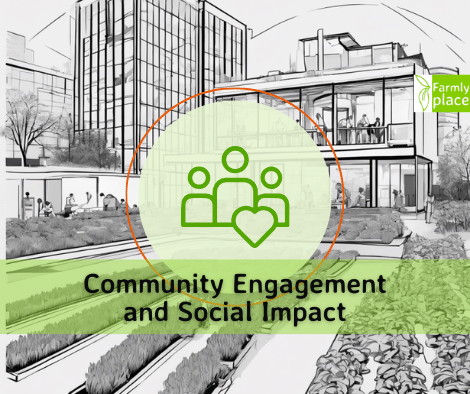
Community participation
At the heart of placemaking is community involvement. Farmlyplace recognizes that the success of urban spaces hinges on active engagement and input from local residents. Through forums, workshops, and interactive platforms, communities are encouraged to voice their opinions, contribute ideas, and participate in decision-making processes. This collaborative approach ensures that the developed spaces resonate with the needs, culture, and identity of the community, fostering a sense of ownership and belonging.

Multifunctional spaces
Farmlyplace’s vision of vertical farming in urban settings goes beyond mere food production; it’s about creating spaces that serve multiple purposes. These multi-functional spaces are designed to accommodate various activities - from food cultivation to recreational areas and educational hubs. This approach maximizes urban space utilization, promoting environmental sustainability while catering to the diverse needs of the city dwellers.
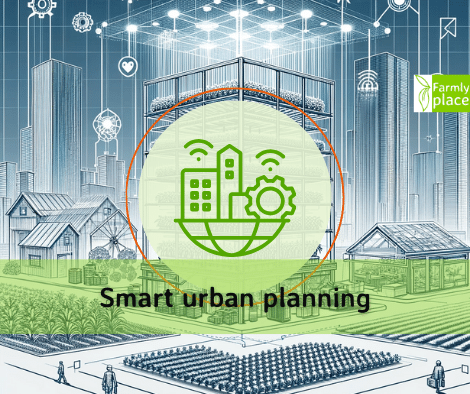
Smart urban planning
Leveraging the latest in digital technology and data analytics, smart urban planning is a cornerstone of Farmlyplace’s methodology. Smart planning involves using data-driven insights to optimize land use, resource management, and environmental impact. This includes the integration of vertical farms into urban designs, ensuring efficient use of resources, and enhancing the city’s resilience to environmental challenges.

Wellbeing and wellness
Recognizing the profound impact of urban environments on individual health and well-being, Farmlyplace places a strong emphasis on creating spaces that enhance the quality of life. Vertical farms and green spaces are designed not only for food production but also to provide serene, natural environments for relaxation and recreation, contributing to the physical and mental well-being of residents.
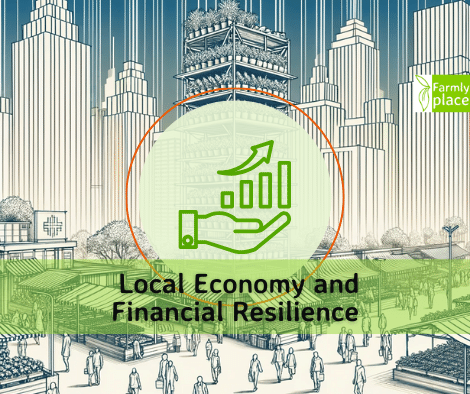
Financial stability
A sustainable urban project must also be economically viable. Farmlyplace approaches financial stability through innovative business models and partnerships that ensure the longevity and success of urban farming initiatives. This includes exploring diverse revenue streams, such as agritourism and education programs, and engaging in public-private partnerships to bolster economic growth and sustainability.
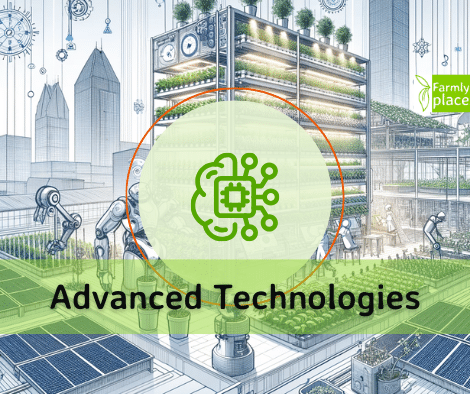
Use of technology
Technology is the backbone of Farmlyplace’s approach to placemaking. Advanced agricultural technologies in vertical farming, like hydroponics and aeroponics, are integrated with smart city infrastructure. IoT devices, AI, and data analytics are employed to optimize farming operations, monitor environmental conditions, and ensure efficient resource management.
Some examples of placemaking projects
.jpg?width=250&height=250&name=NYC%20highline%20(1).jpg) The term "placemaking" describes the process of creating and improving public spaces that have meaning and pleasure for the people who use them. Placemaking involves the participation and collaboration of the local community and considers the physical, cultural, and social aspects of a place. Placemaking aims to improve the quality of life, health, and well-being of people and places.
The term "placemaking" describes the process of creating and improving public spaces that have meaning and pleasure for the people who use them. Placemaking involves the participation and collaboration of the local community and considers the physical, cultural, and social aspects of a place. Placemaking aims to improve the quality of life, health, and well-being of people and places.
Placemaking is both an idea and a practical approach to transforming public spaces into vibrant and vital places that foster social interaction and connection, according to the Project for Public Spaces (PPS), one of the leading organizations promoting placemaking initiatives around the world. PPS has identified eleven key principles for placemaking, such as listening to the community, having a vision, experimenting, and being flexible.
Placemaking is a way of creating places that reflect the identity and aspirations of the people who live in them. It is a process that empowers people to shape their public realm and make it more enjoyable and meaningful for everyone.
Precollinear Park in Turin
The Precollinear Park in Turin, Italy, which transformed an abandoned tram line into an outdoor recreation area with wooden seats, pallet benches, flower pots, and a platform for events. The project was developed by Torino Stratosferica in collaboration with hundreds of local residents who shared their ideas and raised money through crowdfunding campaigns. -> Archdaily on placemaking
High Line in New York City
The High Line in New York City, USA, which transformed an old elevated railway into a linear park offering greenery, art and views of the city. The project was initiated by two local residents who were passionate about preserving and repurposing the railroad, and involved the collaboration of various stakeholders, including designers, artists, community groups, and city officials. -> Wikipedia on Placemaking
Superkilen in Copenhagen
The Superkilen in Copenhagen, Denmark, a public park that celebrates the diversity and multiculturalism of the neighborhood. The park features objects from different countries, such as benches, lamps, signs, and sculptures, chosen by the residents themselves. The park also has different zones for different activities, such as sports, picnics, and meetings. -> What is placemaking?
Placemaking
By adhering to the principles of placemaking, urban planning initiatives can cultivate environments where people can thrive, rooted in community engagement, environmental stewardship, and economic vitality. This approach ensures that urban development goes beyond mere construction of buildings and infrastructure, but rather focuses on creating spaces that foster a sense of community, celebrate diverse cultures, and provide a high quality of life for all residents.
These testimonials and quotes are envisioned to emphasize the importance of community involvement, sustainable practices, and green infrastructure in placemaking, portraying a positive and hopeful vision of the future cities fostered by Farmlyplace's initiatives.
"Cities have the capability of providing something for everybody, only because, and only when, they are created by everybody."

Jane Jacobs
"Since Farmlyplace took the helm in our neighborhood, my family has experienced a noticeable uplift in our quality of life. The spaces are greener, the food is fresher, and there is a genuine sense of community bonding that I haven't felt in years."

a neighbor
"Farmlyplace has not only transformed this urban space into a green oasis but has also fostered a true sense of community. We are more than neighbors; we are collaborators, working hand in hand to ensure food security while nurturing our environment."

a visitor
"Cultures and climates differ all over the world, but people are the same. They'll gather in public if you give them a good place to do it."
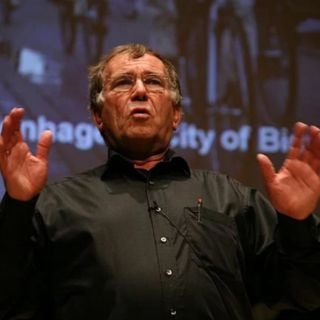
Jan Gehl
Placemaking is a wonderful approach to planning, designing, and managing public spaces that brings people together:
In conclusion, Farmlyplace's multi-dimensional approach to place-making in the realm of smart cities and vertical farming represents a significant leap towards sustainable urban living. By harmonizing community needs with environmental stewardship, and leveraging technology for efficiency, Farmlyplace is not just envisioning but actively constructing a greener, more sustainable future for urban dwellers.
.jpg?width=1200&length=1200&name=SDG%2011%20(English).jpg)
.jpg?width=1200&length=1200&name=SDG%2013%20(English).jpg)
In the context of urban planning and green cities, placemaking can take on several dimensions that aim to enhance the quality of life for residents:
Environmental Sustainability: The planning process involves creating green, sustainable environments that bolster the health and wellness of residents. Incorporation of green technology solutions such as vertical farming in urban planning could create sustainable food production systems, promote bio-diversity and enhance environmental resilience.
Community Engagement: Placemaking encourages active participation from community members to share their insights and perspectives, facilitating a design that mirrors the needs and aspirations of its residents.
Multifunctional Spaces: Placemaking advocates for multifunctional spaces that cater to diverse community needs, thereby fostering inclusive environments. These spaces are designed to be accessible, promoting social interaction while catering to diverse functionalities, including recreation, relaxation, and socialization.
Smart Urban Planning: Leveraging data-driven solutions, planners can analyze various metrics such as pedestrian foot traffic, most utilized public spaces, etc., to create intelligent urban designs that are both efficient and user-friendly. It represents a dynamic move towards responsive city designs that evolve based on the continuous input and data analyses.
Wellness and Well-being: The planning process focuses on promoting the health and wellbeing of the residents by incorporating elements such as walkable neighborhoods, bike paths, parks, and recreational facilities that encourage physical activity and wellbeing.
Economic Vitality: Placemaking can help in fostering local entrepreneurship and economic development through the creation of vibrant public spaces that attract businesses and investments.
Technology Integration: In a green city context, integrating technological advancements like SaaS solutions in the daily operations and management of urban spaces can create environments that are not only sustainable but also smart and efficient, enhancing the overall quality of life.
